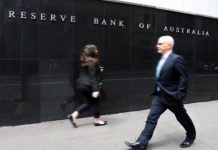Market movers today
In Sweden, the October LFS labour market report will give some clues about the severity of underlying trends in the labour market. Recent seasonally adjusted data shows a drop in employment, a corresponding rise in unemployed people while at the same time there was a decline in the non-labour force. This suggests that at least partially, a rising number of job seekers may be the reason for the rise in the unemployment rate rather than it being a direct consequence of firms starting to shed work force to protect profits.
In the euro area, we get the final version of the already published October inflation (2.9% y/y for core HICP). There are rarely significant revisions, but we will get more details on the drivers.
ECB President Lagarde will give a keynote speech at the Frankfurt European Banking Congress.
US housing starts and building permits data for October are due. This is interesting to watch for signs that high interest rates are finally dampening housing investment, although that is not the expectation for today.
San Francisco Fed President Daly speaks. She is not a voter on the FOMC currently but will be in 2024.
The 60 second overview
Markets and economic data releases. The amount of market-moving news out yesterday was generally quite limited. Yields fell after the release of higher-than-expected US claims data and worse-than-expected industrial production figures in the afternoon, while the upbeat Philly-Fed for November received less market attention.
Michael Barr, vice chair for supervision at the Fed, in a speech yesterday warned about the basis trade in the treasury market, which has risen substantially in size since the turn of the year. Barr warned about the risks of the treasury market functioning due to the high degree of leverage that hedge funds typically apply in the trade.
In Europe, ECB chief Lagarde expressed some caution on the outlook for financial stability in the Eurozone, as higher funding costs and lower lending volumes are gradually putting more pressure on the banking sector. Additionally, policymakers should pay extra attention to the impact on non-performing loans stemming from the combination of weak growth and higher rates.
Oil. Oil prices dropped yesterday and Brent slipped back below USD 80/bbl. More weak US data put an end to the rebound at the beginning of the week. As we have noted before, we think oil prices could potentially be a bellwether for a deterioration of global aggregate demand. The fact that a weaker USD, geopolitical risk and low OPEC+ production has failed to keep up oil prices supports this view. If the sell-off continues we will keep a watch-out for comments from Saudi Arabia about a further extension of the 1mb/d voluntary output cut, and from the US about resumption of buying of oil for its strategic reserves. Both factors would help floor oil prices.
FI: Global yields drifted gradually lower in yesterday’s session, reversing Wednesday’s move up. The Bund curve bull-steepened, with the 10Y tenor declined by 6bp throughout the day. The move was quite gradual for most of the day, but the weaker-than-expected US claims data accelerated the move in the afternoon. The 10Y BTP-Bund spread ended down by 3bp at 175bp, the lowest level since the end of August. The 5y5y EUR inflation swap rate continued declining in line with energy prices throughout the day. The current 2.36% is the lowest level seen since the end of March. Long UST yields were down by 8bp throughout the session.
Equities calmed on Thursday. Yields lower was not enough to trigger further buying, but US closed up a mild 0.1% while Europe pulled back -0.7%. We see this breather as good news as volatility comes down. However, pundits may claim that this is the start of weak data no longer being perceived as good news, as it was weakening job data that triggered the rebound lower in yields. The best performers lately retreated, including small caps or regional banks. Quality sectors outperformed, including utilities, tech and communication. Value cyclicals were at the bottom. US futures are unchanged this morning.
FX: Oil and commodity currencies have come under renewed pressure amid the decline in oil and commodity prices broadly. Especially NOK traded heavy in yesterday’s session with EUR/NOK back close to the 11.90 mark. EUR/USD ended the session at close to unchanged levels after having surged on weaker US data releases. EUR/GBP hovers around the 0.8750 mark while USD/JPY has fallen back a full figure to 150.50.












